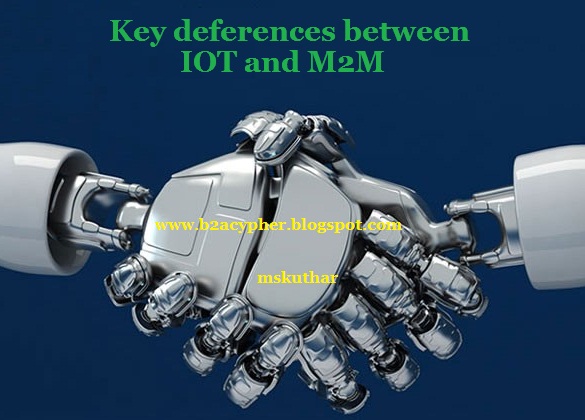What is M2M communication?
- Machine-to-machine communication is referred to as M2M. It is a technology that allows machines to communicate directly through wired or wireless communication channels without the need for human contact.
- (यह एक ऐसी तकनीक है जो मशीनों को मानव संपर्क की आवश्यकता के बिना वायर्ड या वायरलेस संचार चैनलों के माध्यम से सीधे संचार करने की अनुमति देती है।)
- It gathers data and distributes it to other linked devices.
- It is a technology that allows devices to communicate without the usage of the internet.
- M2M communications may be used for a variety of purposes, including defense, monitoring and tracking, production, and facility management.
- M2M technology may be found in a variety of locations, including businesses, retail malls, and homes.
- Controlling electrical items like fans and lighting via Bluetooth from a smartphone is a popular example of a machine to machine.
- The smartphone and electrical gadgets are the two devices that interact with each other in this scenario.
- M2M is a closed, point-to-point communication system that allows physical things to communicate with each other to speed up manufacturing and free up time for other vital duties.
- Machine-to-Machine, or M2M, is a wide term that encompasses technologies that connect "machines," devices, or objects, allowing them to exchange data and conduct activities without the need for human contact or intervention.
- मशीन-टू-मशीन, एम2एम का एक व्यापक शब्द है जिसमें ऐसी तकनीकें शामिल हैं जो "मशीनों," उपकरणों, या वस्तुओं को जोड़ती हैं, जिससे उन्हें मानव संपर्क या हस्तक्षेप की आवश्यकता के बिना डेटा का आदान-प्रदान करने और गतिविधियों का संचालन करने की अनुमति मिलती है।
How M2M Works?
- Machine-to-machine technology's main goal is to collect sensor data and communicate it to a network.
- Unlike SCADA or other remote monitoring tools, M2M systems frequently rely on public networks and access methods, such as cellular or Ethernet, to save money.
- Sensors, RFID, a Wi-Fi or cellular communications link, and autonomic computing software built to help a network device understand data and make choices are the primary components of an M2M system.
- The data is translated by these M2M apps, which can then activate preprogrammed, automatic actions.
- Telemetry, which has been used to send operational data since the early twentieth century, is one of the most well-known kinds of machine-to-machine communication.
- Telemetric pioneers originally utilised telephone lines, then radio waves, to broadcast performance measures collected from remote monitoring sensors.
- Telemetry's function has evolved from pure research, engineering, and manufacturing to daily application in items like heating units, electric metres, and internet-connected devices like appliances, thanks to the Internet and better wireless technology standards.
M2M applications and examples
- Remote monitoring frequently employs machine-to-machine communication.
- When it comes to product refilling, a vending machine, for example, can send a message to the distributor's network, or machine, when a certain item is running short and a refill is needed.
- M2M is critical in warehouse management systems (WMS) and supply chain management since it enables asset tracking and monitoring (SCM).
- M2M devices and apps are frequently used by utilities businesses to not only collect energy, such as oil and gas, but also to bill consumers (through smart metres) and detect workplace parameters such as pressure, temperature, and equipment condition.

